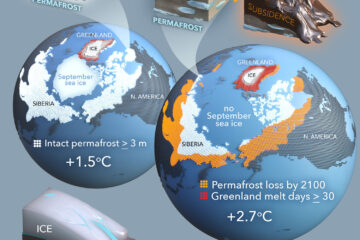Acclimation of photosynthesis and respiration to elevated atmospheric CO2 in two Scrub Oaks
For two species of oak, we determined whether increasing atmospheric CO2 concentration (Ca) would decrease leaf mitochondrial respiration (R) directly, or indirectly owing to their growth in elevated Ca, or both. In particular, we tested whether acclimatory decreases in leaf-Rubisco content in elevated Ca would decrease R associated with its maintenance. This hypothesis was tested in summer 2000 on sun and shade leaves of Quercus myrtifolia Willd. and Quercus geminata Small. We also measured R on five occasions between summer 1999 and 2000 on leaves of Q. myrtifolia. The oaks were grown in the field for 4 years, in either current ambient or elevated (current ambient + 350 µmol mol−1) Ca, in open-top chambers (OTCs). For Q. myrtifolia, an increase in Ca from 360 to 710 µmol mol−1 had no direct effect on R at any time during the year. In April 1999, R in young Q. myrtifolia leaves was significantly higher in elevated Ca—the only evidence for an indirect effect of growth in elevated Ca. Leaf R was significantly correlated with leaf nitrogen (N) concentration for the sun and shade leaves of both the species of oak. Acclimation of photosynthesis in elevated Ca significantly reduced maximum RuBP-saturated carboxylation capacity (Vc max) for both the sun and shade leaves of only Q. geminata. However, we estimated that only 11–12% of total leaf N was invested in Rubisco; consequently, acclimation in this plant resulted in a small effect on N and an insignificant effect on R. In this study measurements of respiration and photosynthesis were made on material removed from the field; this procedure had no effect on gas exchange properties. The findings of this study were applicable to R expressed either per unit leaf area or unit dry weight, and did not support the hypothesis that elevated Ca decreases R directly, or indirectly owing to acclimatory decreases in Rubisco content.


